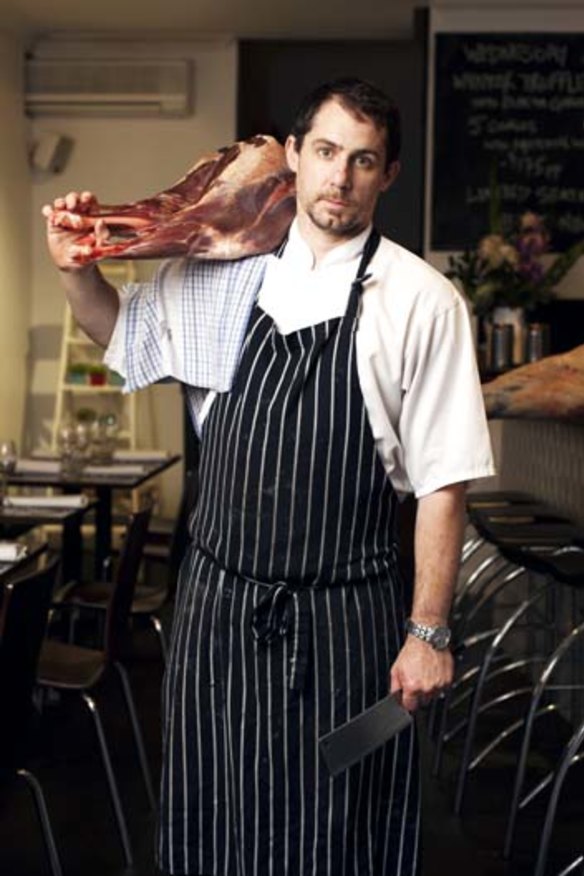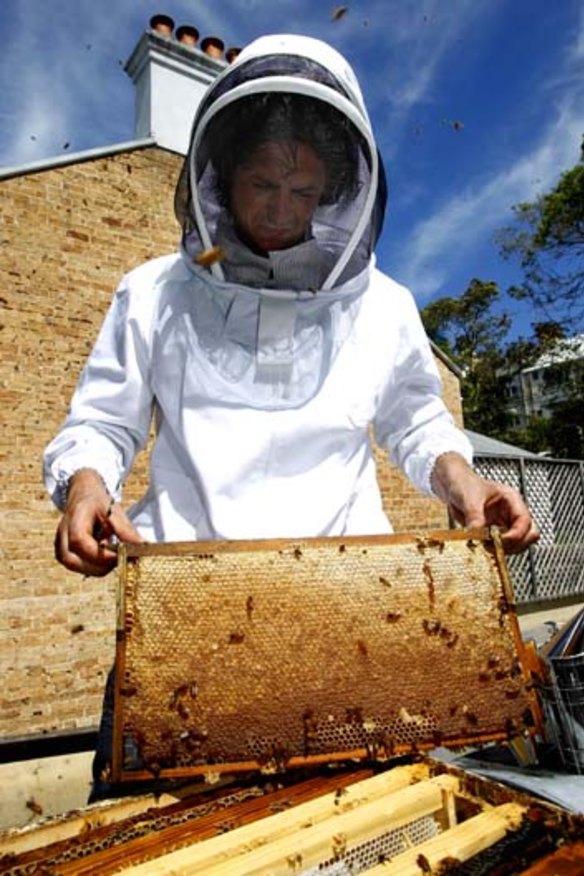Nothing goes to waste as chefs butcher in-house

Chef Paul Cooper has long believed in the nose-to-tail philosophy of using every part of the animal. But it's only since opening his own restaurant nine months ago that he decided ''to go the whole hog'', and bring all his butchery in-house.
''It's primarily for a cost-cutting reason,'' says Mr Cooper, of Surry Hills restaurant Bishop Sessa.
''A lot of people who practise nose-to-tail will buy in the secondary cuts like the head or tail. Every piece of meat we get, we get in whole.''

Mr Cooper, who ran the kitchens at O'Connells, The Provincial and The Botanical in Melbourne, is one of a growing number of Sydney chefs and restaurateurs cutting out the middle man and going directly to producers in a bid to cut costs.
It is extra work, Mr Cooper says, but the savings are significant.
''The mark-up applied by the butcher might be up to eight times the wholesale price. My supplier charges me the same price as a butcher,'' he said.
''A side of wagyu used to take me nearly seven hours to break down the carcass. Now I'm down to about three hours.''
While cost was the driving factor, he says the practice increases creativity and reduces waste.
''We figure out a good way to serve all the different cuts that you don't normally see on restaurant menus, which is what I find fun and challenging at the same time,'' Mr Cooper said.
''It teaches the staff how to use cuts they wouldn't normally use and to reduce wastage by using the whole beast.''
Colin Fassnidge, chef and owner of two-hatted restaurant Four in Hand in Woollahra, says butchering in-house saves him half the price.
''It is more economical to buy in a whole animal than it is to buy pieces, so if you've got the skill and you know how to do it then you save lots of money,'' Mr Fassnidge said.
However, he says few chefs have the skills required to make the practice cost-effective.
''The art of butchering has died,'' he said. ''I think chefs just got lazy.
''A lot of them are into their dusts and their foams and their charcoals and that's great, but they can't fillet a fish.''
Mr Fassnidge also keeps beehives on the restaurant's roof to supply honeycomb for one of the Four in Hand's desserts.
The warm honeycomb frames are brought dripping to the table and served alongside a lemon verbena and sorrel juice parfait. ''The initial cost was $900 but I've harvested the whole year.''
Marrickville's Cornersmith cafe has taken to crowd-sourcing produce from local gardens. ''Last year we had a pickled sandwich on the menu and pickles went out of season,'' said co-owner James Grant. ''There's a lot of chokos around here and we said if anyone's got chokos can you bring them in.''
Bags of chokos were followed by trays of citrus, avocados, rocket and tomatoes, and customers would exchange them for coffees, chutneys or even a free meal.
''Some people come in and don't want anything. They've just got too much rocket in their garden or they've got a bag of lemons that's fallen on the ground and they don't want it to go to waste,'' Mr Grant said. ''It's really beautiful. It brings a really strong sense of community to this cafe.''
Restaurant reviews, news and the hottest openings served to your inbox.
Sign up